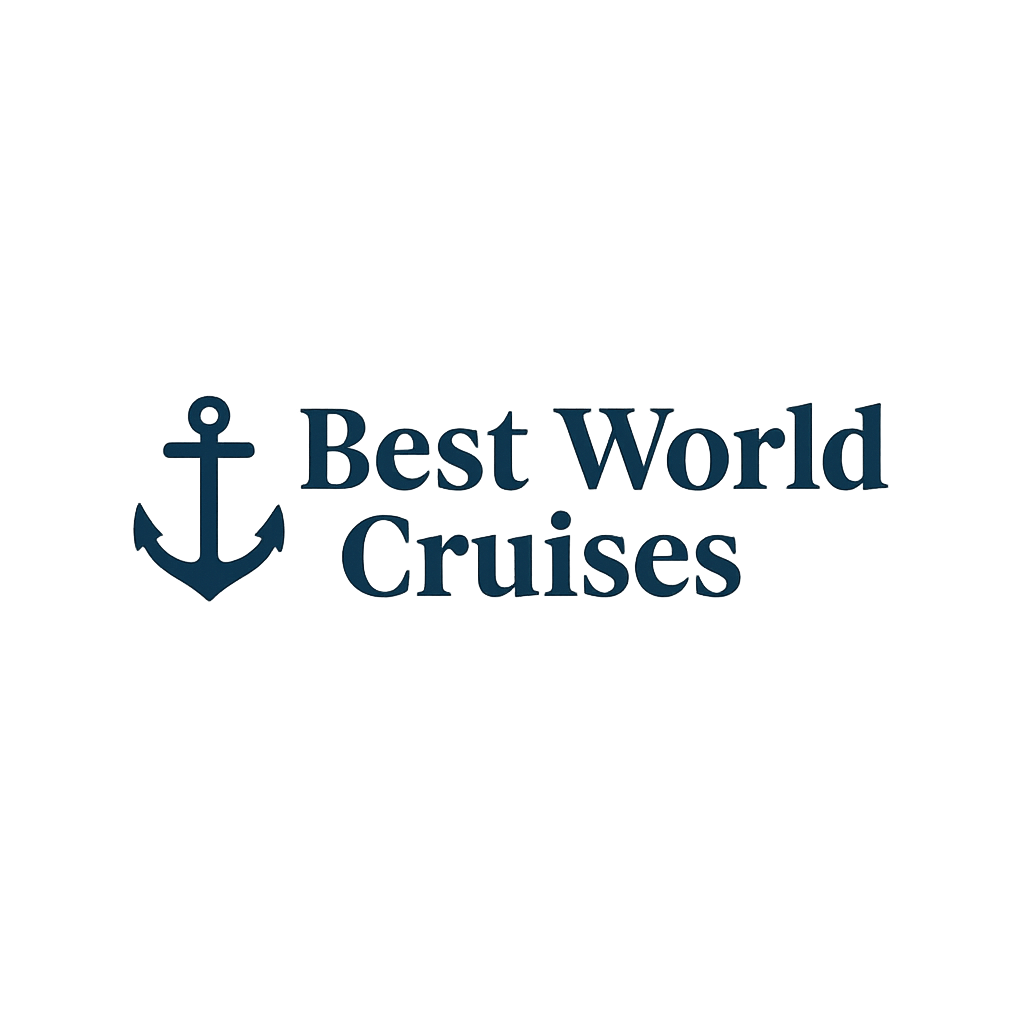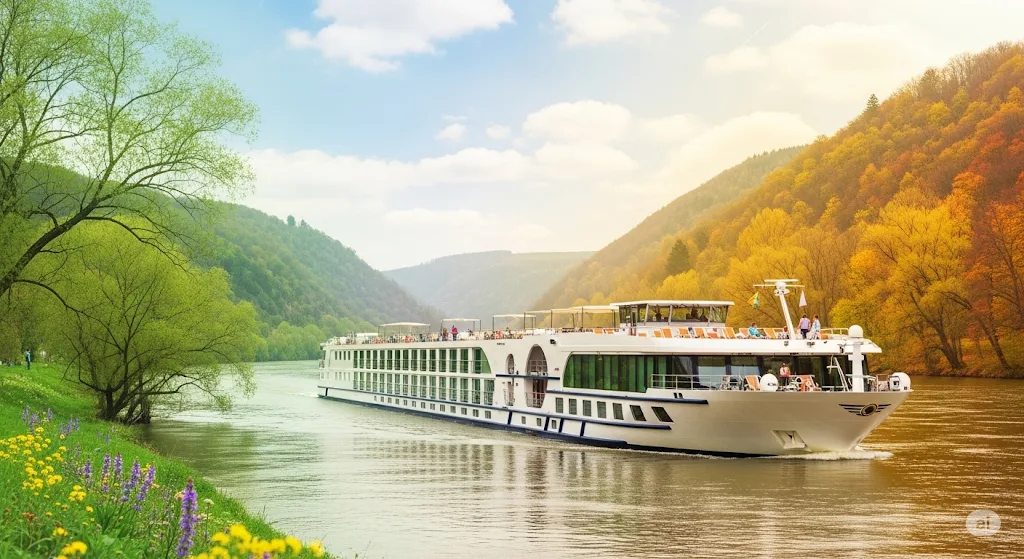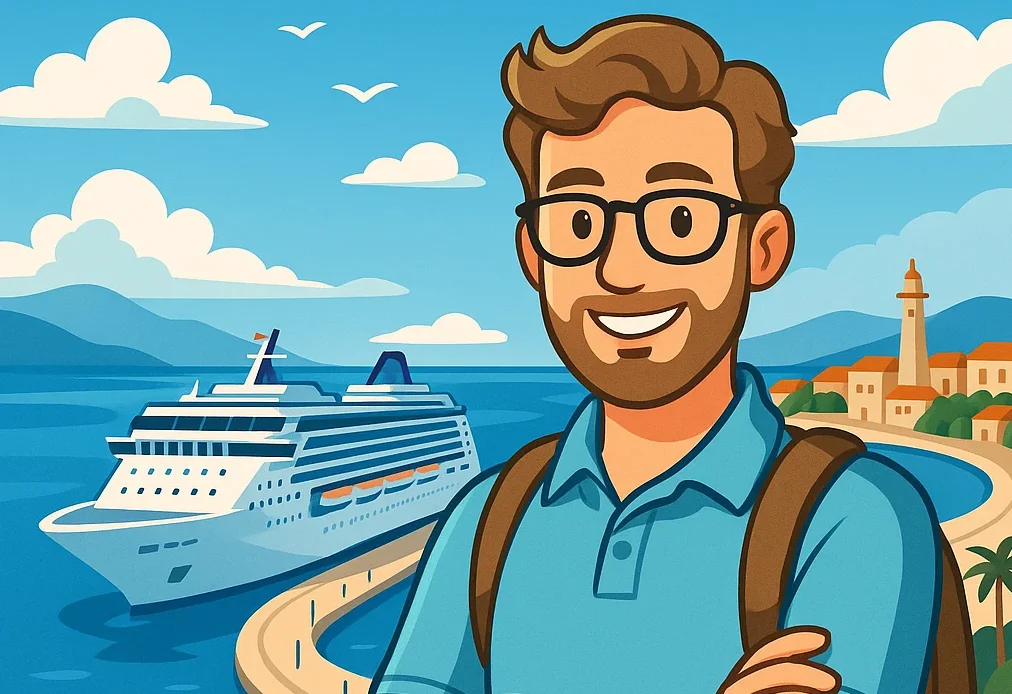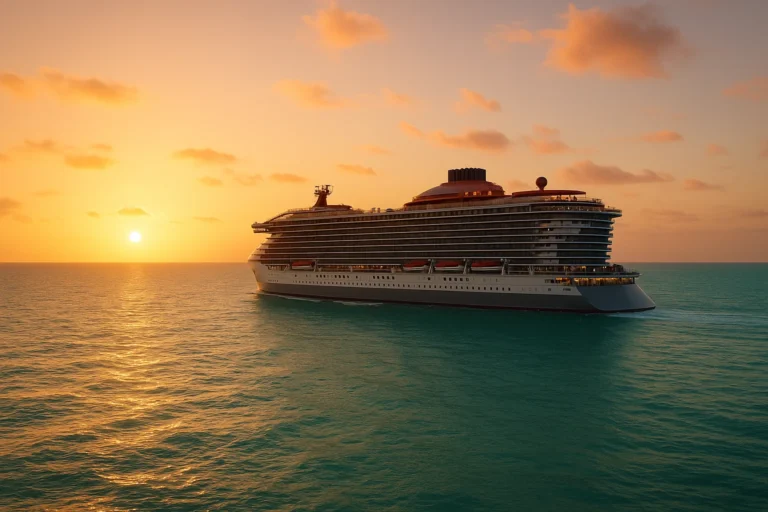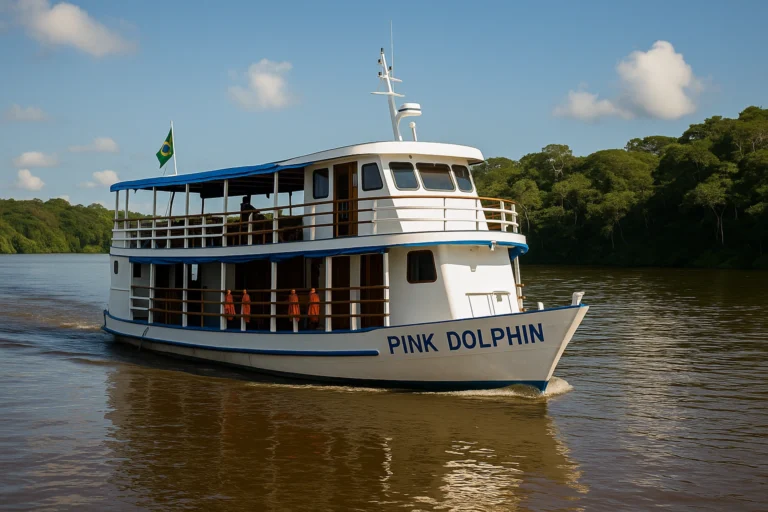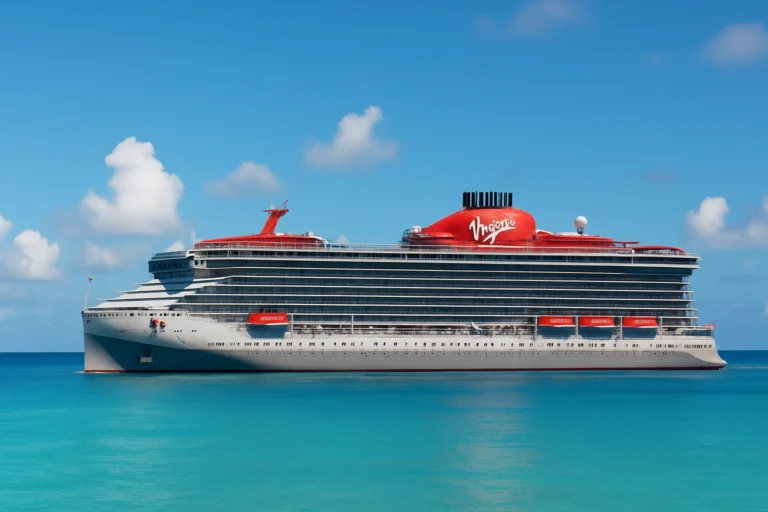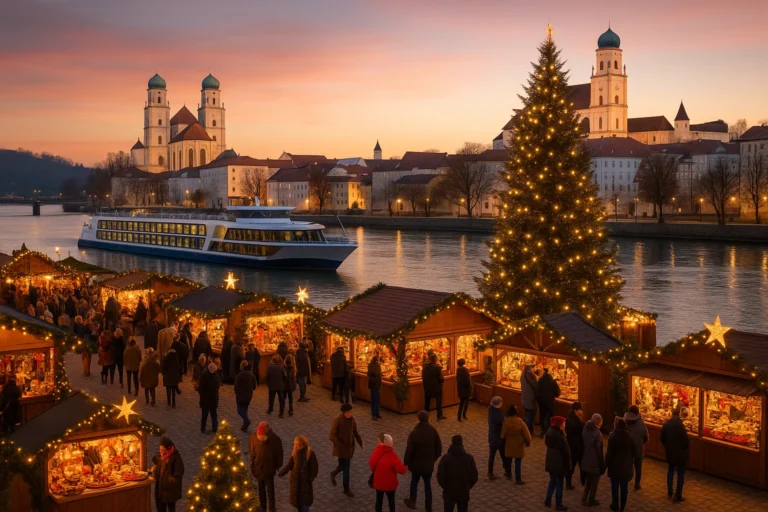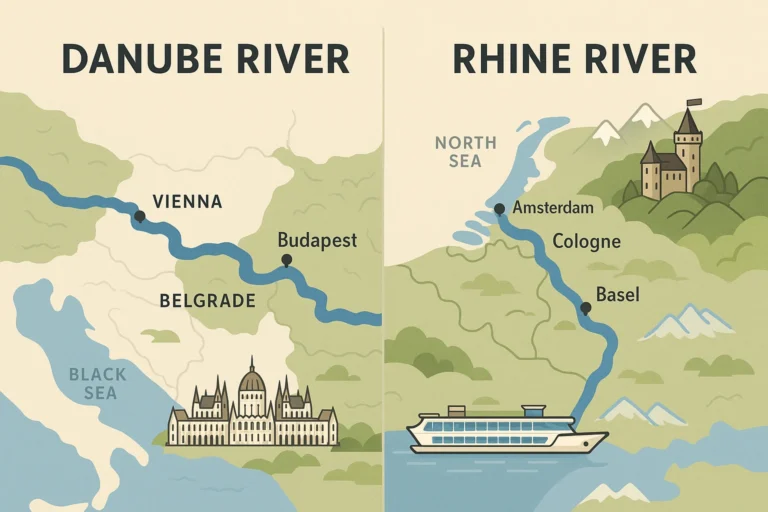Best Time for a River Cruise: Spring, Summer or Fall?
This comprehensive guide will break down what each season offers, helping you weigh the pros and cons to determine which time of year is perfect for your unforgettable river cruise adventure. Get ready to navigate the seasons and discover your dream voyage! 🛶✨
🌸 Spring River Cruises: A Season of Renewal (March – May)
Spring on the river is a magical time when nature awakens, and Europe’s landscapes burst into vibrant colors. This shoulder season offers a refreshing alternative to the busier summer months.
Pros of Spring River Cruises:
- Fewer Crowds: Experience popular destinations with more breathing room. Tourist sites are less congested, and you’ll find a more relaxed atmosphere.
- Lower Prices: As a shoulder season, spring often offers more competitive pricing on fares and flights compared to peak summer. This is great for budget-conscious travelers.
- Blooming Landscapes: Witness stunning floral displays, especially in regions like Holland and Belgium, famous for their tulip fields. Gardens and parks along the rivers are at their most beautiful.
- Mild Weather: The temperatures are generally mild and pleasant, ideal for sightseeing and excursions without the intense heat of summer.
- Spring Festivals: Enjoy local celebrations like Easter markets and traditional spring festivals.
Cons of Spring River Cruises:
- Variable Weather: While generally mild, spring weather can be unpredictable. You might encounter cooler days or rain showers, so packing layers is essential.
- Water Levels: Early spring (March/April) can sometimes see higher water levels due to snowmelt, potentially affecting navigation or requiring bus transfers for certain segments.
- Limited Hours (Early Season): Some smaller attractions or outdoor cafes might still operate on reduced hours, particularly in early March.
Best For: Nature lovers, photographers, budget-conscious travelers, those who prefer cooler temperatures and fewer crowds. Popular routes include the Rhine (especially for tulip cruises) and the Danube.
☀️ Summer River Cruises: Peak Season Vibrancy (June – August)
Summer is the most popular time for river cruises, offering warm weather, long days, and a vibrant atmosphere. It’s when Europe truly comes alive with tourists and outdoor activities.
Pros of Summer River Cruises:
- Guaranteed Warm Weather: Enjoy abundant sunshine and warm temperatures, perfect for relaxing on deck, outdoor excursions, and al fresco dining.
- Long Daylight Hours: With extended daylight, you have more time to explore each port of call and take in the scenic beauty along the riverbanks.
- All Attractions Open: Every museum, shop, and attraction will be operating at full capacity, offering a complete cultural experience.
- Vibrant Atmosphere: Cities are bustling with activity, outdoor festivals, concerts, and lively street performances.
- Family-Friendly: Summer aligns with school holidays, making it an ideal time for families to travel together, with many cruise lines offering specific family-oriented itineraries.
Cons of Summer River Cruises:
- Higher Prices: As the peak season, summer cruises generally come with the highest fares and airfare costs.
- Larger Crowds: Popular cities and attractions will be significantly more crowded, requiring more patience and potentially longer lines.
- Heat: Especially in Southern Europe (e.g., Douro in Portugal, Rhône in France), temperatures can be very hot, potentially making daytime exploration less comfortable for some.
- Lower Water Levels: Late summer (August/September) can sometimes see lower water levels, particularly on rivers like the Elbe or sections of the Danube, which might lead to minor itinerary changes or slower navigation.
Best For: Families, first-time river cruisers, sun-seekers, and those who prioritize warm weather and vibrant cultural experiences. All major European river cruise routes are popular during summer.
🍂 Fall River Cruises: A Tapestry of Colors (September – November)
Fall offers a beautiful and often overlooked period for river cruising. The landscapes transform into a palette of warm colors, and the atmosphere becomes more reflective and cozy.
Pros of Fall River Cruises:
- Stunning Autumn Foliage: Witness breathtaking natural beauty as trees along the riverbanks turn brilliant shades of red, orange, and gold. This is particularly spectacular on rivers like the Rhine and Moselle.
- Harvest Festivals: Participate in local wine and beer festivals, especially in Germany’s Rhine and Moselle valleys, celebrating the grape harvest.
- Fewer Crowds: Post-summer, the crowds thin out significantly, offering a more peaceful touring experience at popular sites.
- Comfortable Temperatures: The weather is generally crisp and cool, ideal for walking and exploring, with pleasant daytime temperatures.
- Christmas Markets (Late Fall): For those cruising in late November and early December, the magic of the European Christmas Markets begins, transforming cities into festive wonderlands.
Cons of Fall River Cruises:
- Variable Weather: Similar to spring, fall weather can be unpredictable, with a higher chance of rain and cooler temperatures as the season progresses.
- Shorter Daylight Hours: Days gradually become shorter, reducing the amount of daylight for sightseeing and scenic cruising.
- Fog Potential: Some rivers, especially the Danube and Rhine, can experience fog, particularly in late fall, which might lead to delays or minor itinerary adjustments.
- Attractions Closing: Towards late fall (November), some seasonal attractions or outdoor activities might begin to close for the winter.
Best For: Wine lovers, culture enthusiasts, those who appreciate autumn colors, travelers seeking a quieter experience, and those interested in early Christmas Markets. Popular routes include the Rhine, Moselle, and Danube.
Factors Influencing Your Perfect River Cruise Choice
Beyond the seasons, several other considerations should guide your decision to ensure your river cruise aligns perfectly with your expectations.
- Budget: If budget is a primary concern, aim for the shoulder seasons (spring and fall) or look for early bird deals and last-minute promotions. Peak summer and Christmas Market cruises are typically the most expensive.
- Crowd Tolerance: If you prefer fewer crowds at popular sites and on board, spring and fall are your best bets. Summer will be the busiest.
- Weather Preference: Do you thrive in warm sunshine, or do you prefer crisp, cooler days for exploring? This will heavily influence your seasonal choice.
- Specific Interests: Are you passionate about tulips, wine festivals, historical sites, or Christmas markets? Align your cruise dates with specific events or seasonal attractions.
- River/Destination Specifics: Some rivers are better suited for certain times. For instance, the Douro in Portugal can be very hot in summer but offers stunning vineyards. The Christmas Markets are exclusive to late fall/early winter.
- Water Levels: While cruise lines are adept at managing water level fluctuations, it’s a factor to be aware of. High water (spring) or low water (late summer/early fall) can sometimes necessitate changes in itinerary or ship swaps, though these are usually well-handled.
❓ Frequently Asked Questions (FAQ) about River Cruise Seasons
1. Are Christmas Market cruises considered “fall” or “winter”?
Christmas Market cruises typically begin in late November and extend through December. So, they bridge late fall and early winter, offering a unique, festive experience that’s distinct from traditional fall foliage cruises.
2. When are the lowest prices for river cruises?
The lowest prices generally occur during the earliest and latest parts of the season – early spring (March) and late fall (November). Booking well in advance (12-18 months) can also secure better deals, regardless of the season.
📂 Explore More in These Categories
Cruise Travel Tips – Expert Advice & Guides
3. Is water level ever a serious issue that cancels cruises?
While water levels can fluctuate (high in spring, low in late summer/early fall), full cancellations are rare. Cruise lines are highly experienced in managing this. They might use smaller ships, modify itineraries, or arrange bus transfers for affected sections to ensure guests still experience all planned destinations.
4. Can I bring kids on a river cruise in any season?
While most river cruises cater to an adult demographic, some lines offer specific family-friendly sailings, primarily during summer school holidays. However, children of all ages are generally permitted on board in any season. Just be aware that specific kids’ activities might be limited outside of peak family travel times.
5. What are the benefits of cruising during the “shoulder season”?
Shoulder seasons (spring: March-May, fall: September-November) offer a fantastic balance: lower prices, fewer crowds, pleasant weather (though variable), and unique seasonal attractions like spring blooms or autumn foliage/harvest festivals. It’s often considered the best value for money and a more authentic local experience.
Conclusion: Your River Cruise, Your Perfect Season!
Ultimately, the “best” time for a river cruise is deeply personal, reflecting your priorities and travel style. Whether you dream of vibrant spring blossoms, sun-drenched summer days, or the rich hues of autumn, each season presents a unique opportunity to experience Europe’s storied rivers.
By carefully considering your budget, tolerance for crowds, weather preferences, and specific interests, you can confidently choose the time of year that promises to deliver your ideal river cruise adventure. No matter when you decide to embark, a journey along Europe’s waterways promises unforgettable memories, cultural immersion, and breathtaking scenery. Happy cruising! 🚢🌍
